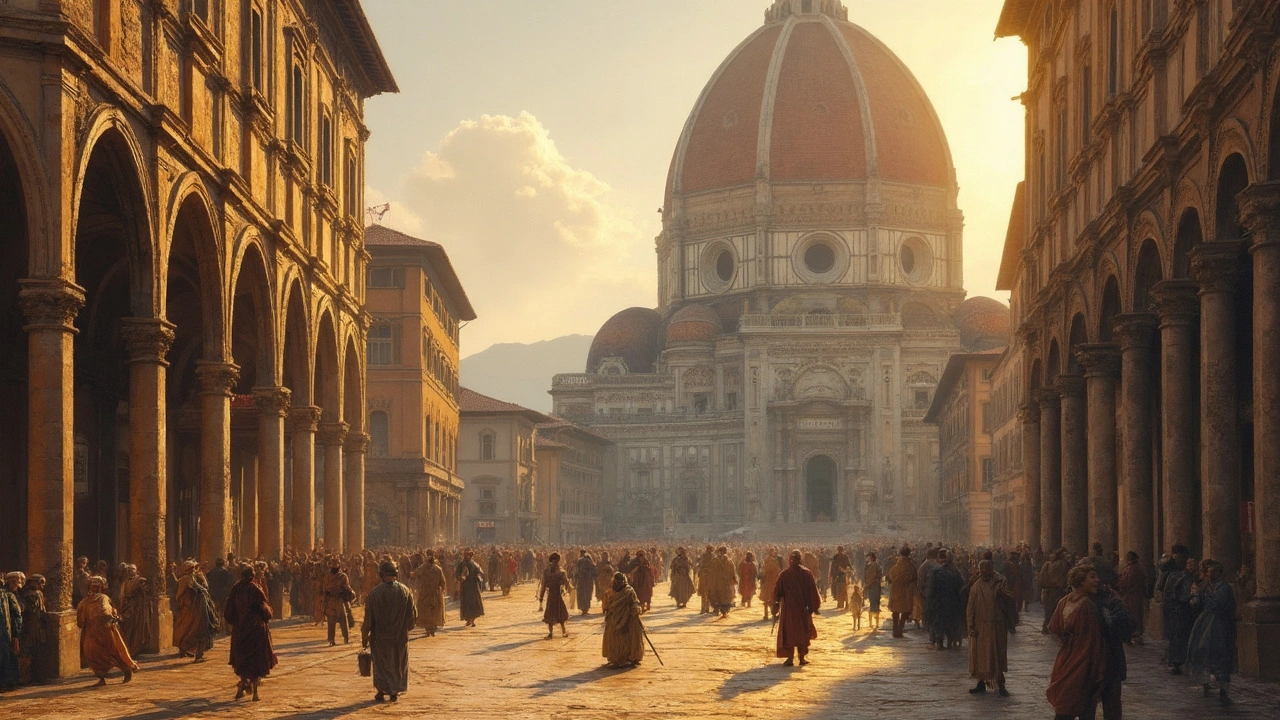Explore the fascinating world of Renaissance architecture, from the domes of Florence to the columns of Rome. Discover artists, design secrets, and why this era still shapes our cities.
Michelangelo: Master of Renaissance Architecture
You probably think of Michelangelo as the painter of the Sistine Chapel. True — but he remade buildings too, and his architectural moves changed how designers thought about form, space, and drama. Want to spot the moments where art became structure? Start here.
He did not copy ancient Rome. Instead he picked classical pieces apart and reassembled them with force. Expect rough, carved stone that looks almost sculpted, giant pilasters that climb a facade, and odd tensions where proportions feel off on purpose. Those choices create movement and drama — like a sculpture frozen mid-action but turned into a building.
Michelangelo treated façades like faces. Windows, columns, and cornices push and pull against each other rather than sit in quiet symmetry. That’s why his Laurentian Library stair feels like a stage, why the Medici Chapel packs so much emotion into a small room, and why his work on St. Peter’s shifted the whole idea of monumental scale.
Where to see his work and what to look for
Florence is the easiest classroom: the Laurentian Library, Medici Chapel, and Casa Buonarroti show his interiors, sketches, and unfinished experiments. In Rome, the Capitoline Hill and the parts of St. Peter’s he redesigned show how he handled public space. When you visit, look for dramatic staircases, reused ancient fragments placed as new statements, and elements that seem intentionally ‘too big’ or oddly placed — those are his fingerprints.
Practical tips for students and visitors
Study a plan before you go so you notice how circulation changes. Sketch small details on site — a twisted cornice, a heavy keystone — and compare them to textbook classical examples. Museum placards and guidebooks often miss the deliberate tensions, so ask guides about what was altered from original plans. For deeper reading, pair what you see with articles on Renaissance architecture, Renaissance history, and related movements like Baroque and Beaux-Arts to trace his influence across time.
Michelangelo’s architecture matters because it bridges sculpture, urban design, and theatrical effect. He taught later architects to use surprise, scale, and sculptural mass to shape emotion in stone. If you want a quick study path: start with his Florentine interiors, move to his Roman projects, then read about Baroque and Beaux-Arts to see how his ideas echoed. Browse the linked articles on this tag page to follow that line from Renaissance experiments to modern city landmarks.

